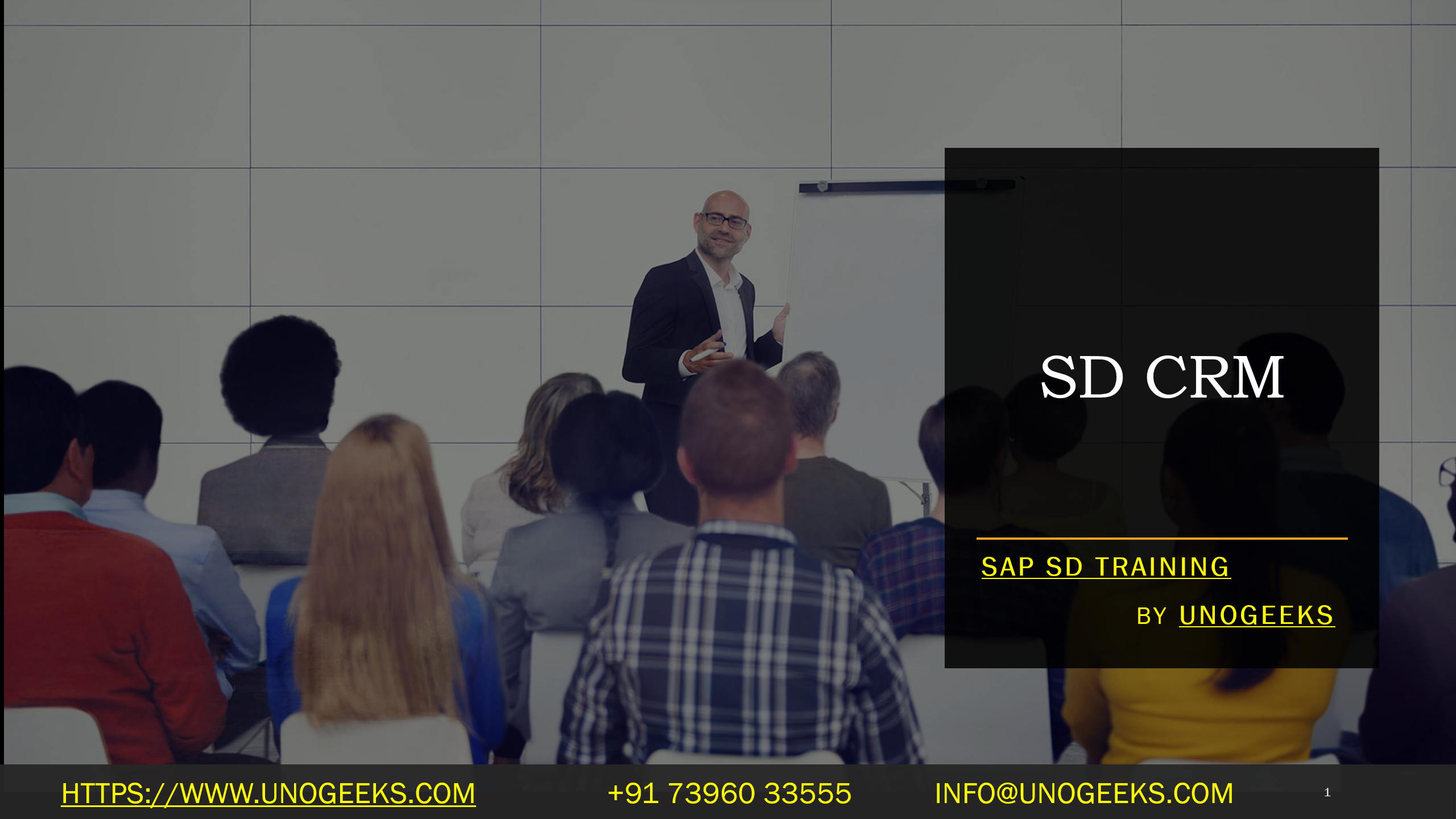SD CRM
SD vs. CRM: Understanding the Pillars of Customer Relationship Management
In business, the customer is king (or queen!). Businesses deploy various software solutions to manage complex customer relationships effectively. Two of the most essential acronyms you’ll hear are SD and CRM. Let’s break down what they are and how they work together.
What is SD?
SD stands for Sales and Distribution. It’s a core SAP ERP (Enterprise Resource Planning) system module. SD handles the essential sales-related processes within a business, including:
- Order Management: From the initial customer inquiry to the final delivery of goods or services.
- Pricing: Calculating prices, discounts, and special offers.
- Shipping and Logistics: Planning and scheduling deliveries
- Invoicing and Billing: Generating accurate invoices and managing payments.
What is CRM?
CRM stands for Customer Relationship Management. While SD covers the transactional aspects of the sales process, CRM focuses on nurturing the entire customer relationship across all touchpoints. CRM systems typically include:
- Customer Data Management: Creating a centralized database of customer information (contact details, purchase history, interactions).
- Marketing Automation: Designing targeted campaigns and lead generation activities.
- Sales Force Automation: Tracking leads, managing sales pipelines, and forecasting.
- Customer Service and Support: Providing helpdesk services, issue tracking, and building a knowledge base.
The Crucial Difference
Think of SD as the engine that drives transactions and fulfills orders. CRM is the steering wheel that helps businesses forge long-term customer relationships, optimize marketing efforts, and boost customer satisfaction.
SD and CRM: A Powerful Integration
The real magic happens when SD and CRM systems are integrated. This seamless flow of data between the two provides a 360-degree view of the customer journey, enabling:
- Improved Sales Efficiency: CRM data funnels qualified leads to the SD system, leading to higher conversion rates.
- Personalized Customer Experiences: SD can access customer history and preferences from CRM, tailoring offers and communications.
- Accurate Forecasting: By integrating sales data from SD with CRM insights, businesses gain better visibility into future sales pipelines.
- Enhanced Customer Service: Service teams can see past orders and deliveries in the SD system, allowing for quick issue resolution.
The Importance of Choosing the Right Systems
Selecting the right SD and CRM solutions for your business is paramount. Some of the most popular options include:
- SAP SD: An integral part of the SAP ERP system.
- SAP CRM: SAP’s powerful CRM solution.
- Salesforce: A leading cloud-based CRM platform.
- Other CRM options: Microsoft Dynamics, HubSpot, Zoho, and many more.
Wrapping Up
SD and CRM are both essential tools in a modern business arsenal. While they have distinct purposes, their integration fosters a customer-centric approach, leading to improved sales, enhanced customer loyalty, and increased overall business growth.
Conclusion:
Unogeeks is the No.1 IT Training Institute for SAP Training. Anyone Disagree? Please drop in a comment
You can check out our other latest blogs on SAP SD here – SAP SD Blogs
You can check out our Best In Class SAP SD Details here – SAP SD Training
Follow & Connect with us:
———————————-
For Training inquiries:
Call/Whatsapp: +91 73960 33555
Mail us at: info@unogeeks.com
Our Website ➜ https://unogeeks.com
Follow us:
Instagram: https://www.instagram.com/unogeeks
Facebook: https://www.facebook.com/UnogeeksSoftwareTrainingInstitute
Twitter: https://twitter.com/unogee
